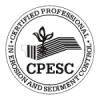Give Clear Directions
Before I give you the quick tips for effective environmental report writing, here’s a quick story.
I moved my family to Australia in 2011 and didn’t know much about Australia’s environment. Only ”there’s lots of stuff that can kill you.”
But not long after we arrived, my 3-year old daughter told me she wanted to see a koala.
So we drove north on a scorching December afternoon in my 1994 Nissan Patrol (with the old “goes forever” 4.2-litre diesel engine) to Crowdy Bay National Park, a beautiful place on the north coast of New South Wales.
At Diamond Head Campground, we walked into the National Park (NP) office hut. The intense summer light turned dark.
A uniformed National Parks officer sat behind a bench.
When I asked him where to find a koala, he gave my daughter a little smile, and this is what he said:
“If you head back out the entrance, and go right on the dirt road for about a 1/2 km, keep an eye out on the left side for a rusty old gate, and just park there so’s you’re off the road.”
“Walk past that gate and you’ll see a grassy trail going for about, oh, 20m or so.”
“If you just look up in the gum trees there, careful now, sometimes you see a small family of koalas. They’ve been there recently, too.”
Simple.

Experts Make it Sound Easy
The NP guy was probably the best person to ask. He’d probably been working in that National Park for years. With biologists, ecologists, and heritage specialists.
An expert familiar with the territory, he was definitely our best shot.
If I had asked others in the campground, I might have got a cold beer out of it, but probably ended up on a goose chase. Or in a ditch.
My point?
If you don’t get accurate, clear, and concise directions, you might get lost.
Funny. It’s the same with environmental reports and assessments.
Accurate and Organised Stories
For years I worked as an environmental consultant, writing reports for development approvals in the transport, rail, roadway, and extractive industries.
It takes effort to distil detailed and complex science into simple, but accurate language. And extract only relevant facts from a plethora of information out of five technical reports. Then weave together a coherent and well-written story that directs the reader through a series of points and finally to a conclusion.
It’s not rocket science. But not everyone is good at it. Or even wants to do it.
Regulatory approvals, environmental science, engineering, they all need to meld together into an accurate and coherent story.
OK, it’s not as simple as giving directions to find a small koala population.
But it’s how environmental impact assessment and technical writing works – or should work. Experience and a solid understanding of report structure can do a lot for technical writing.

Four Simple Guidelines
Here is a set of 4 simple guidelines to help you develop well-written technical reports and environmental assessments.
1) Define and describe exactly what is being assessed, or the subject of your report.
The project scope sets the stage and forms the very basis of your assessment report. Describe it with an appropriate level of detail.
For development projects, clarify whether the scope includes construction, operation, or both. Answer the question, what are the physical boundaries and timelines of this project?
The scope may change multiple times because the project team uncovers hidden details. Scope revisions are not uncommon. But stay with it. Always challenge and question the project definition.

2) Develop an organised document structure.
If the report is a heavy tome, no one will read the entire document. Use topical headings and subheadings so a reader can quickly find the information most relevant to them.
But even with short technical reports, develop the table of contents before you even start writing. Your chosen structure needs to maintain a logical flow from beginning to end. Try to base the TOC on what you know reviewers will be looking for.
3) Use consistent terminology throughout the document.
Refer to “The Project” or “Proposal” (which you’ve clearly defined in the scope, right?), but not both. Capitalise consistently. Use “Control F” to find and replace words, and to check through your document. If your report is over 20 pages and very technical, you’ll probably need a glossary to define specialist terms and acronyms.
4) Develop clear, crisp writing.
It seems like never-ending sentences are all-the-rage in environmental reports and assessments. Here’s one from a quick online search:
“In addition to the potential visual impacts of the proposed Port Botany Expansion, there are also several new viewing opportunities which would be created by the proposed works along the foreshore corridor near the port, which many visitors to the area would find visually interesting and dynamic.
It’s tempting to fit as many ideas as you can into one long sentence. While long sentences have their place, shorter ones are easier to read. So break them up. Simply adding a period and starting a new sentence can make sentences infinitely more readable.
“While there are potential visual impacts, the Proposal would also create several new viewing opportunities for area visitors along the foreshore corridor near the port.”
You could go on to describe the new “dynamic” and “interesting” views. And use bullets for summarising related points.
Bonus Tip 1: Elements of Style is an easy and short read that will boost your writing to above average in days. Really. Get it if your job includes a significant amount of any type of writing.
Bonus Tip 2: When you think you’re finished, sit on it for a couple of days, then go through and edit. It’s not easy, but review your own writing like you never wrote it. Then get someone else to review it.
But enough about writing environmental reports.
Did We Find the Koala or Not?
Fair question…
Well, we followed the NP officer’s instructions and found the rusty old gate. I parked the Patrol off the dirt road, we got out, and I looked at the trail. The grasses grew taller than my daughter. I hesitated.
Snakes? So I heaved my daughter up on my shoulders and started into the gum tree forest.
We looked up and down every sturdy trunk and twisted branch.
Not 15 metres away, nestled in a crotch of a slender gum tree sat our koala. Awake and looking at us, its tannin-stained fur made it appear more reddish-brown than grey on the belly and inner arms. Like the rusty old gate.
Thanks to the National Park expert’s clear, simple, and valuable instructions, we discovered something worthwhile.
Kind of like writing an environmental management plan? Well, maybe not exactly. But if you keep your writing clear, concise, and organised, you’ll elevate the quality of your reports. Then they might actually be useful!
That’s what I strive for.
Do you have some environmental reports to write? Let’s discuss your needs, requirements, and deadlines (confidentially). I’ll make sure what you need is written clearly and addresses all your environmental requirements.
And most importantly, takes you to where you want to go.
So give me a call or send me an email.
Erik



